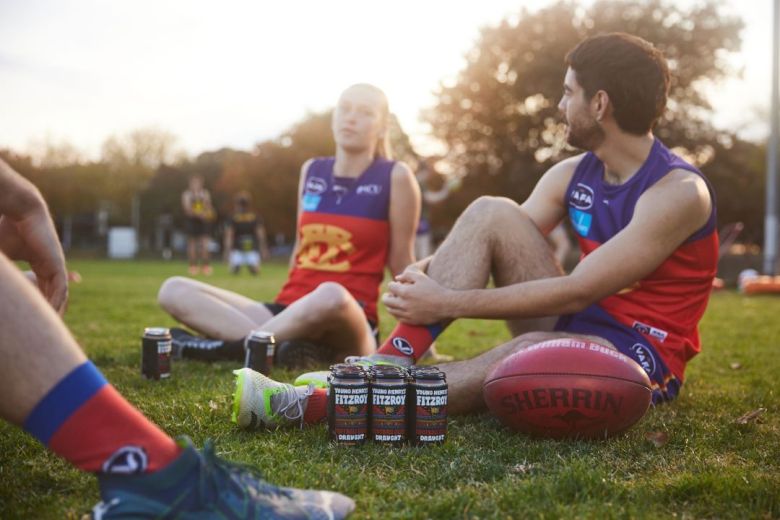 The Sydney brewery has teamed up with the Melbourne footy team, to create the locally inspired Fitzroy Draught.
The Sydney brewery has teamed up with the Melbourne footy team, to create the locally inspired Fitzroy Draught.  The Sydney brewery has teamed up with the Melbourne footy team, to create the locally inspired Fitzroy Draught.
The Sydney brewery has teamed up with the Melbourne footy team, to create the locally inspired Fitzroy Draught.  The Sydney brewery has teamed up with the Melbourne footy team, to create the locally inspired Fitzroy Draught.
The Sydney brewery has teamed up with the Melbourne footy team, to create the locally inspired Fitzroy Draught.  Inspired by travels during his twenties, Brett Philips shares how he found his love for beer in Europe and how that inspires his work today.
Inspired by travels during his twenties, Brett Philips shares how he found his love for beer in Europe and how that inspires his work today.  The Beer & Brewer Awards return live in 2025 to celebrate excellence across Australia’s vibrant beer industry.
The Beer & Brewer Awards return live in 2025 to celebrate excellence across Australia’s vibrant beer industry. An Englishman’s dream pub sparked Indy’s craft beer scene, leading to generations of brewers chasing flavor, community, and good vibes.
The post From Broad Ripple to Beer Boom: The Story of Indy’s Brewing Legacy appeared first on CraftBeer.com.
 The IBA is urging indie beer lovers to consider which candidates are invested in the best interests of the the brewing community.
The IBA is urging indie beer lovers to consider which candidates are invested in the best interests of the the brewing community.  Young Henrys and Vic on the park team up to host live and free music event, Rock & Roll Circus 2025.
Young Henrys and Vic on the park team up to host live and free music event, Rock & Roll Circus 2025. 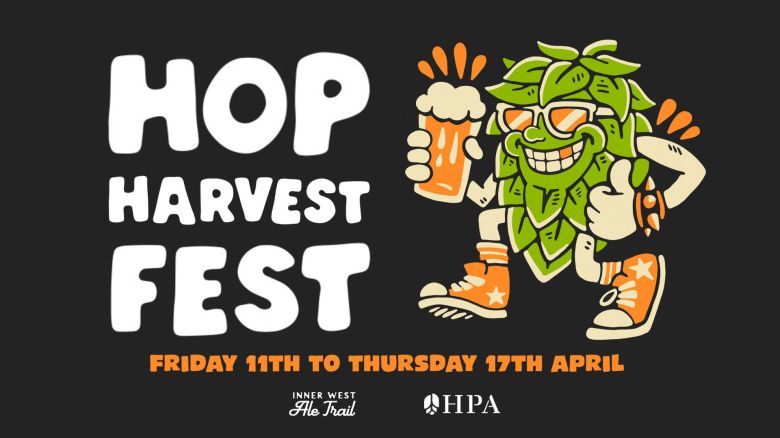 The Hop Harvest Fest is returning to the Inner West Ale Trail from 11-17 April with 11 breweries releasing exclusive new beers to their tap rooms.
The Hop Harvest Fest is returning to the Inner West Ale Trail from 11-17 April with 11 breweries releasing exclusive new beers to their tap rooms. American breweries are embracing Czech pouring traditions to elevate foam quality, flavor, and the overall craft beer experience.
The post Czech Your Taps: Breweries Level Up with Perfect Pours appeared first on CraftBeer.com.
 Evin Craney sat down with Beer & Brewer to reflect on his decade-long career in independent beer and highlight the initiatives he's driving forward as IBA Chair.
Evin Craney sat down with Beer & Brewer to reflect on his decade-long career in independent beer and highlight the initiatives he's driving forward as IBA Chair. 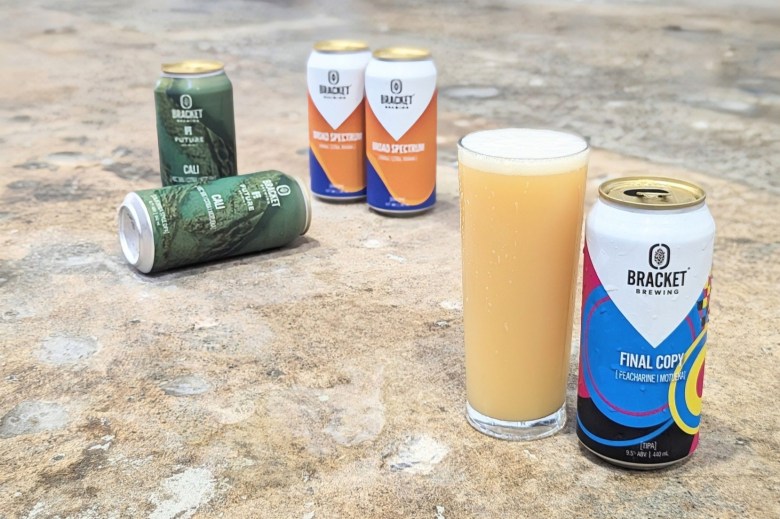 Bracket Brewing was one of 126 Australian breweries to collect an award, named Australia's top three overall beers.
Bracket Brewing was one of 126 Australian breweries to collect an award, named Australia's top three overall beers. As we’re looking ahead to everything that 2025 will bring, we’d also like to take a moment to look back at some of the stories and people who defined craft beer in 2024.
The post Cheers to Beer in 2025 appeared first on CraftBeer.com.
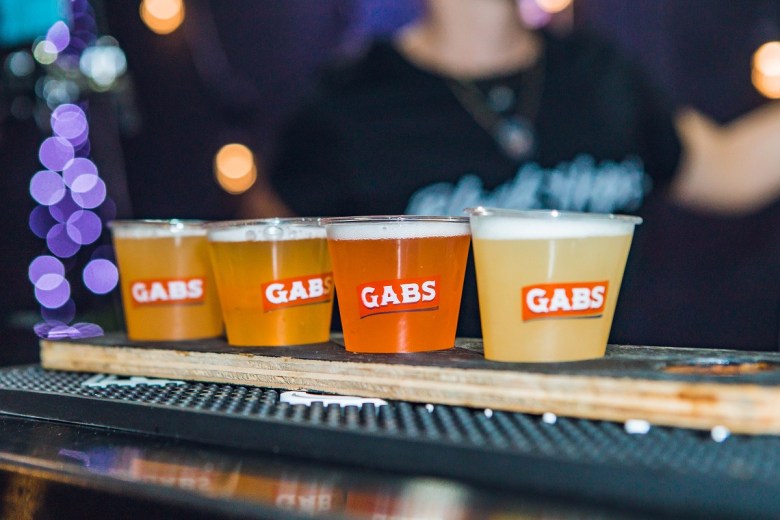 The sub-list shines a spotlight on the most popular beers released in 2024, featuring 72 Australian craft breweries.
The sub-list shines a spotlight on the most popular beers released in 2024, featuring 72 Australian craft breweries.  With just five years under its belt, Mountain Culture secured a historic three-peat in the GABS Hottest 100 poll.
With just five years under its belt, Mountain Culture secured a historic three-peat in the GABS Hottest 100 poll.  Close to 55,000 consumers voted in the latest GABS Hottest 100 poll, and Mountain Culture’s Status Quo Pale Ale came out on top again.
Close to 55,000 consumers voted in the latest GABS Hottest 100 poll, and Mountain Culture’s Status Quo Pale Ale came out on top again. 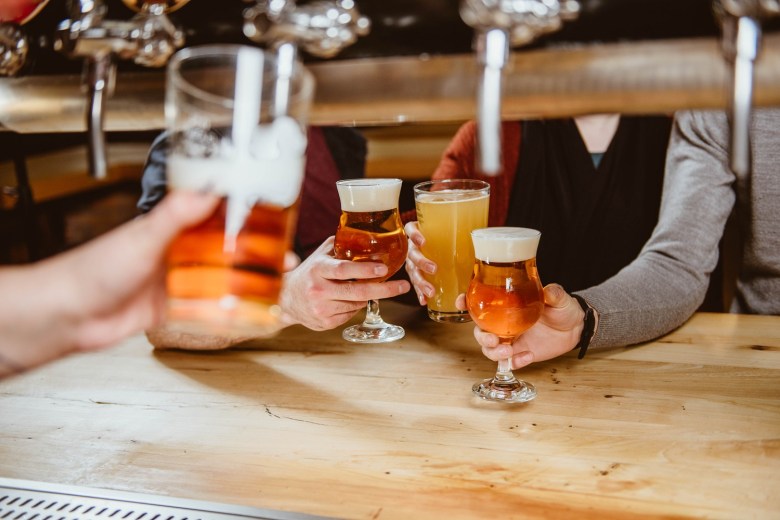 With many breweries facing a slow January, the Brewers Association in the United States is encouraging people to support their local breweries.
With many breweries facing a slow January, the Brewers Association in the United States is encouraging people to support their local breweries.  Tooheys and Dune Rats have partnered in latest campaign to endorse live music across a number of Sydney venues.
Tooheys and Dune Rats have partnered in latest campaign to endorse live music across a number of Sydney venues. Many small-town breweries are woven into the fabric of their surroundings. They're gathering places for tourists and locals alike, representing Americana at its finest.
The post Live and Brew in a Small Town appeared first on CraftBeer.com.
Communal singing groups unite people through casual, joyful experiences blending beer and song, fostering connection and rediscovery in community spaces.
The post Singing For Your Beer: Hops & Hymn appeared first on CraftBeer.com.
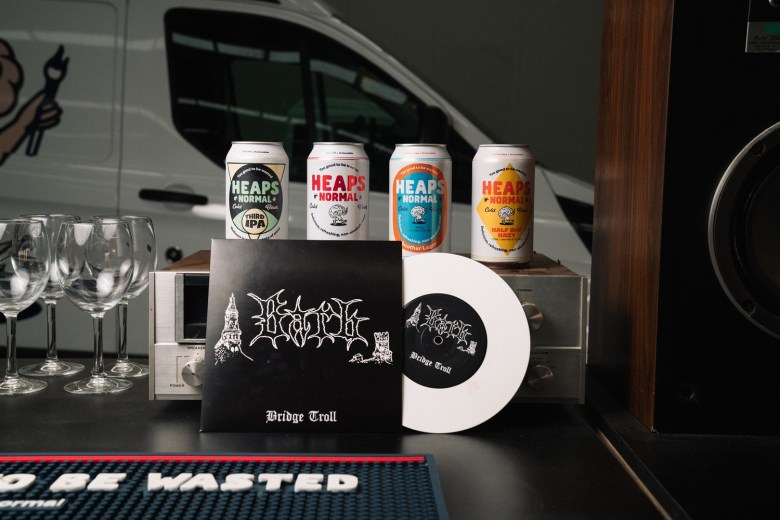 Heaps Normal Records will work with emerging musicians each quarter to release vinyl records, merch and other products.
Heaps Normal Records will work with emerging musicians each quarter to release vinyl records, merch and other products. Don't call it a comeback: Detroit's vibrant craft beer scene mirrors the city's own renaissance.
The post Celebrating Detroit’s Craft Beer History appeared first on CraftBeer.com.
 Sydney Beer Week has made a successful return, energising local breweries and consumers, and highlighting the city's vibrant beer culture.
Sydney Beer Week has made a successful return, energising local breweries and consumers, and highlighting the city's vibrant beer culture.  The 2024 Australian Liquor Industry Awards took place in Sydney last night celebrating the country's best people, brands and venues, with a number of beer winners announced.
The 2024 Australian Liquor Industry Awards took place in Sydney last night celebrating the country's best people, brands and venues, with a number of beer winners announced.  Speaking to Beer & Brewer after his award, Adamson talked about how the brewing industry is changing, improving and some of his career highlights.
Speaking to Beer & Brewer after his award, Adamson talked about how the brewing industry is changing, improving and some of his career highlights. 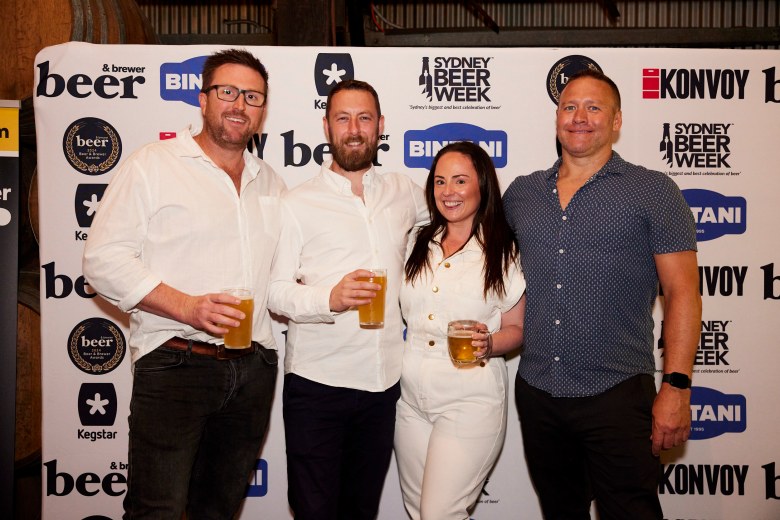 Australian craft beer fans, colleagues and a smattering of journalists gathered last Sunday for the official launch of Sydney Beer Week and the 2024 Beer & Brewer Awards.
Australian craft beer fans, colleagues and a smattering of journalists gathered last Sunday for the official launch of Sydney Beer Week and the 2024 Beer & Brewer Awards. I used to do a talk titled "Embracing Homebrewing" (here it is on the Beersmith Podcast). Basically, rather than worry about replicating the exact process/results of a craft brewery, enjoy the things that you can do on a small scale without regulatory oversight (dosing in spirits, ice distillation, foraging) or economic pressures (expensive ingredients, not worrying about extract efficiency) etc.
The more great brewers I talk to... the more I realize that Scott and I run Sapwood Cellars like a big homebrewing operation more than a small craft brewery. We're lucky that we have enough support and direct sales that don't have to worry too much about cost, time, or efficiency. This post dives into that a little deeper on the benefits of inefficiency using the six beers included in the upcoming shipment of our Out-of-State Shipping Club as examples!
Variability: Flemish Gothic
Most mixed-ferm breweries have a single house culture they pull off a tank or set of barrels or a specific commercial microbe blend that they add to every batch of a given beer. It makes a lot of sense, it promotes consistency and you don't have to worry about blending/attenuation. However, for me it lacks the dynamic flavor options and variety in finished beers I love. Every time we brew a new sour base beer, we select a barrel with a culture that suits it, and add some to primary (along with a healthy Saccharomyces pitch).
Flemish Gothic is a beer we blended from three different wine barrels, with three different base sour reds (Standard Red, Provisional Strength, Vin De Céréale) each with a different culture. That allowed us to dial in the acidity, malt balance, and level of Brett expression. It worked out that we did a three-year blend rather than the standard old/young blend done by Rodenbach and many other Flemish Reds.
Flemish Gothic Tasting Notes
Smell - Real range, right from the start. Honey, leather, blackberry fruit leather, some dried hay of hops. Cocoa, Tootsie Pop. I could see Balsamic, but without the vinegar or nail polish.
Appearance - Beautiful ruby red. Good clarity. Stable off-white foam, pours three fingers.
Taste - Bright lactic acidity, with dried cherries in the finish. No acetic harshness in the finish. Mild perceived fruity sweetness. A little damp oak, but not aggressively woody despite the extended aging thanks to the well used barrels. Could have even used a little more. Slight licorice as it warms.
Mouthfeel - Medium body, pretty smooth. Firm carbonation. Slightly oaky astringency.
Drinkability - Really good, lots of malt/barrel/Brett character all working together without excessive acidity. One of my favorite sours we’ve done, right up there with Growth Rings. I’d like to blend something similar again in a few years.
Changes for Next Time - A few people suggested more acidity, but I like it as is. It’s considerably more acidic than my recollection of Flemish Kiss from Commons. I’ll be looking forward to seeing how this one ages.
Effort: Gindicators 2024
Local in-season fruit is less expensive than buying IQF or Puree. What you are paying for with those is convenience and consistency. Buying locally requires figuring out who grows good produce, building relationships, and being on top of communication. For Gindicators, we sourced peaches, nectarines, and apricots as the summer progressed. I picked through them each day, processing and freezing the fruit that was ripe. Waiting on the rest. It's worth it for me to go that extra length to create the best stone fruit aroma possible!
We paired that with a low-acidity (higher hoping rate) pale base aged in gin barrels. Stone fruit in general and apricots in particular bring a lot of their own acidity. After refermentation we blended in a 30 gallon "double gin-barrel-finished" higher-acid beer to add more gin character.
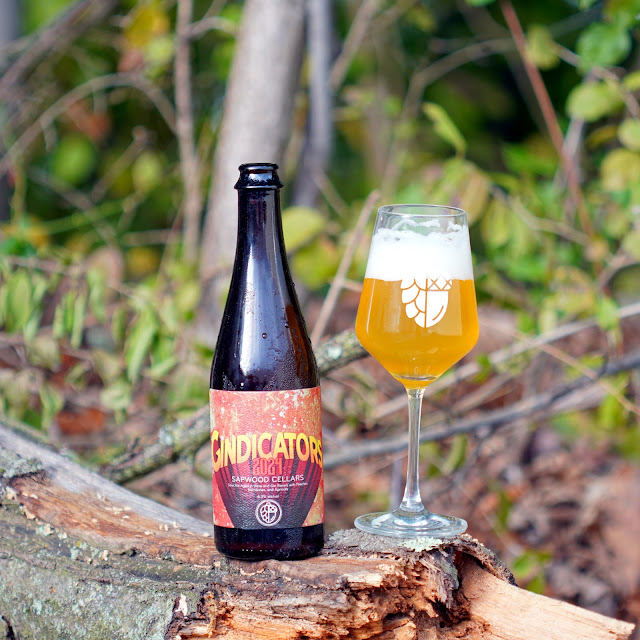
Gindicators 2024 Tasting Notes
Smell - Funky nose, damp hay Brett. As a result, it reads more saison-ish than our sours usually do. Melds in a fun way with citrus and rosemary notes from the barrels. Plenty of stone fruit, yellow peach especially, but leaves room for the other aromatics. Pez candy. Overall vibrant and varied.
Appearance - Mild haze, bright yellow body. Sticky white head, good density. End of the bottle pour has some small yeast floaties. Seems like more yeast adhered in the bottle than usual too. Maybe the 58W3 from refermentaiton?
Taste - Snappy acidity (malic?), glad we selected lower acid barrels for this one! Tastes more acidic than the >3.5 pH suggests. Lots of fresh apricot and nectarine on the palate. Minimal sweetness. Juniper comes through in the finish, piney, Sprite-like. Faint bitterness from the higher IBU component in the blend.
Mouthfeel - Firm carbonation. Light body, but not tannic or harsh despite the extended aging.
Drinkability - The acid level is just about right for my tastes, lingers for a second, but then goes.
Changes for Next Time - Not much to change on this one. I could be tempted to go up 25% on the fruit, it had a little more punch before we blended in the last 30 gallon gin barrel. Likely wasn’t necessary to repitch yeast so soon after refermentation on the fruit?
Process: Neologism 2024
We treat our sour beers with the same care and attention to sanitation and oxygen ingress as we do our Hazy IPAs. We purge the barrels and bottles with CO2, we fill the blending tank with water and push it out to remove all of the oxygen before transers. I think it really shows with the "vibrancy" of the aromatics we are able to achieve, especially in a dry hopped sour like Neologism. It goes into the blending tank on hops, and infuses cold for 48 hours before bottling. Since we can't do a water push out with the hops in there, we do the push out, then add the hops while purging with CO2.
The only previous batch of Neologism was named to Craft Beer & Brewing's Top 20 of 2022... that was the only beer we ever entered into a contest of any type!
Neologism 2024 Tasting Notes
Smell - Expressive in the nose with the gin shining. Spruce tips. Barnyard. Hops aren't as "raw" as an IPA, but it is still fresh smelling.
Appearance - Head is great (dense, long lasting). Slightly hazy golden.
Taste - A little of that guava thing from the first batch is starting to come through, awesome. Pleasant acidity, tart, but not harsh. Gin is a little more savory-herbal than previous gin beers: rosemary, spruce, bruised basil. A touch of oaky-vanillin as it warms.
Mouthfeel - Light astringency, firm carbonation. Light body.
Drinkability - I think this one will continue to improve as the edges soften and the hops integrate more. Still wish we could get more of those McClintock Reserva barrels, but even the second use one really helped this one!
Changes for Next Time - On point! Not this beer… but would still love to do a Tangerine-Gin and/or a Guava Gin at some point.
Risk: Honeymoon SZN
We try a lot of different things that "sound like a good idea." It would certainly be easier and more reliable to pick a slate of brands to make every year. We do rebrew/blend the same beers occasionally, but we don't have a firm schedule and we always try to leave room for inspiration based on what barrels, ingredients, and flavors we have available.
For Honeymoon SZN we started with a collab we brewed at Olde Mother Brewing (Frederick). Wedding SZN was a rice ale with Nelson Sauvin, elderflowers, and Phantasm (along with a natural thiol-releasing yeast strain). We racked it to white wine barrels and let the resident culture work. I sourced muscadine/scuppernong grapes (indigenous) through a local farmstand that has a relationship with a grower in South Carolina. I knew it was a good idea from the aroma of my car on the way back - halfway between Nelson Sauvin and Strawberry candy!
Honeymoon SZN Tasting Notes
Smell - Muscadine really comes through. Lots of white grape juice. Some toasty-funk, but not a primary aroma when cold. Bridges the gap between the Nelson and Brett.
Appearance - Clear. Very pale yellow. Good thick white head that doesn’t last long.
Taste - Light acidity, even less than Life is Ridiculous. Good fruit character, unique, fresh. A touch of funky smoke in the finish I haven’t noticed before. No elderflower.
Mouthfeel - Bright, light, spritzy.
Drinkability - Good, could use a touch more acid, but it is very drinkable as is.
Changes for Next Time - Not sure muscadine is a star… would be fun with a light dry hop. Maybe with another fruit, stone fruit?
Time: Opulence 2024
We age our beers for a long time. Years ago I visited an established brewery that had just added a large barrel facility for sour beers. The brewer running it mentioned he had to meet a monthly production quota for packaged product. Just seems impossible for that to produce fantastic beer. Sometimes we go a month without bottling anything because the beer isn't ready yet... sometimes we are doing back-to-back runs because we don't want something to sit any longer! Opulence 2024 was supposed to be Opulence 2023, but the beer just wasn't ready for the cherries after 8 months in the barrel... but it was at 20 months! We had some leftover high-acidity beer from the previous batch of Opulence kegged off that we blended in with the "fresher" beer that was aged in second-use Cherry Brandy barrels.
Opulence 2024 Tasting Notes
Smell - Reminds me of my homebrews (in a good way). Funk (leathery) really comes through along with cherry and almond. Cherry is really fun, lots of cherry pie, vanilla, and depth. Nothing weird from the cherry brandy barrels considering the previous use was Imperial Stout.
Appearance - I wish the clarity was a little better, but the color is a pleasant amber-orange. Great off-white head.
Taste - Mild acidity, could be a little higher. Detectable bitterness (maybe a hair high). Good cherry flavor, sour cherry pie, vibrant.
Mouthfeel - Light astringency, which is disruptive to the smoothness. Firm carbonation, medium-thin body.
Drinkability - It’s solid. I like the lower acidity compared to past batches, but the bitterness gets in the way.
Changes for Next Time - I wonder if aged hops rather than fresh in the whirlpool would work without providing any weird aromatics? I really like what the Saaz in the whirlpool did for the aroma and balance (lower acidity), but the bitterness clashes with the acidity in flavor… despite being “only” 19 IBUs. Maybe better to go with some alpha acid extract in the tank?
Equipment: Stained 2024
One thing that has worked out well for us is having smaller equipment. Rather than be forced to do big blends, we have equipment that is sized for flexibility. For example, with Stained we age it on wine grapes and raspberries separately. I'm sensitive to the "seedy" flavor that comes from long contact time with raspberries... but I also enjoy the deeper flavors of extended skin contact on grapes. So for this batch we kegged off the raspberry half after two weeks, while the Merlot grapes continued aging for another month until we liked the flavor. This plays into having the time to taste and adjust the production schedule.
Stained 2024 Tasting Notes
Smell - Berries, especially raspberries… go figure. Certainly reads Flemish Red, Rodenbach etc. rather than Lambic thanks to no big funk/rubber.
Appearance - Bright red, thin off-white head drops quickly. Good clarity, but not brilliant. Very attractive.
Taste - Raspberry popsicle, very bright. Suggestion of sweetness from the fruit and malt. THP has cleaned up. Jammy, not overtly malty, but it fills in the fruit. Firm acidity, no harshness. Wine is subdued, but layers complexity and roundness compared to straight raspberries. Clean, not much funk although there is some earthiness. Oak is subdued thanks to third-use barrels.
Mouthfeel - Medium-light, firm carbonation. Not thin or watery, helps support the fruit.
Drinkability - Good, plenty of acid for my tastes, delicious fruit. Could be a little more interesting microbially, but it works in the Flemish tradition.
Changes for Next Time - Could shift more towards the Merlot? Surprised how much acidity it picked up despite the alpha acid extract in the tote.
Out of State Shipping Club
If you are interested in tasting these beers, please sign-up by 10/28! You'll be charged $146 to your card on file and expect to receive your beer the first week of November! Available in: WA, CA, OR, NM, NV, CO, MN, NY, DC, CT, NE, MA, FL, PA, NH, NJ, ID, TX, KS, IN, WI, MO, IA, IL, MI, ND, VA, RI, NC, and SC.
Includes one 500 mL bottle each:
Gindicators 2024: Gin-barrel-aged pale sour with Peaches, Nectarines, and Apricots
Flemish Gothic: 3-year Blend of Wine Barrel Aged Sour Reds
Opulence 2024: Sour Red with Fresh and Dried Sour Cherries aged in Cherry Brandy and Bourbon Barrels
Neologism 2024: Gin-barrel-aged and Mosaic Cryo Dry Hopped
Stained 2024: Wine-barrel-aged with Raspberries and Merlot Grapes
Honeymoon SZN: Wine-barrel-aged with Phantasm and Muscadine/Scuppernong Grapes
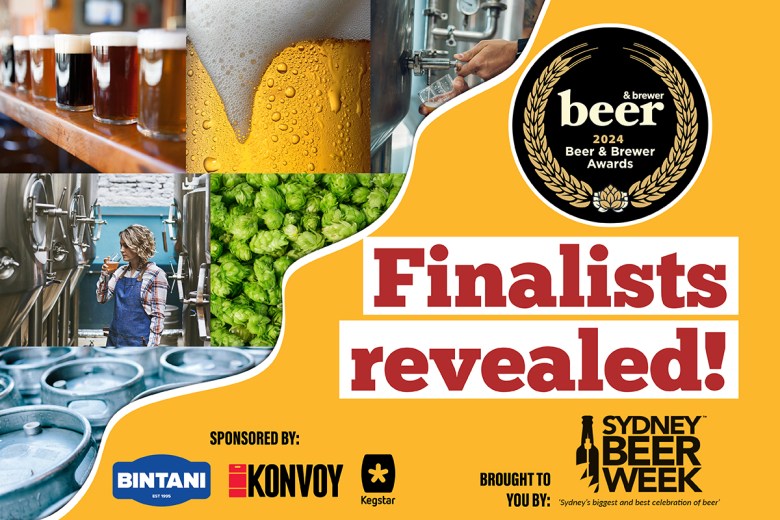 The votes have been counted and we are delighted to reveal the finalists for the 2024 Beer & Brewer Awards.
The votes have been counted and we are delighted to reveal the finalists for the 2024 Beer & Brewer Awards.  Slated to open in November, the new venue will be Mountain Culture's first inner-city joint, housing the brewery's new barrel program.
Slated to open in November, the new venue will be Mountain Culture's first inner-city joint, housing the brewery's new barrel program.  BeerFest Australia engages more than 30 musical acts over its festivals, with Sneaky Sound System headlining the Sydney event.
BeerFest Australia engages more than 30 musical acts over its festivals, with Sneaky Sound System headlining the Sydney event. 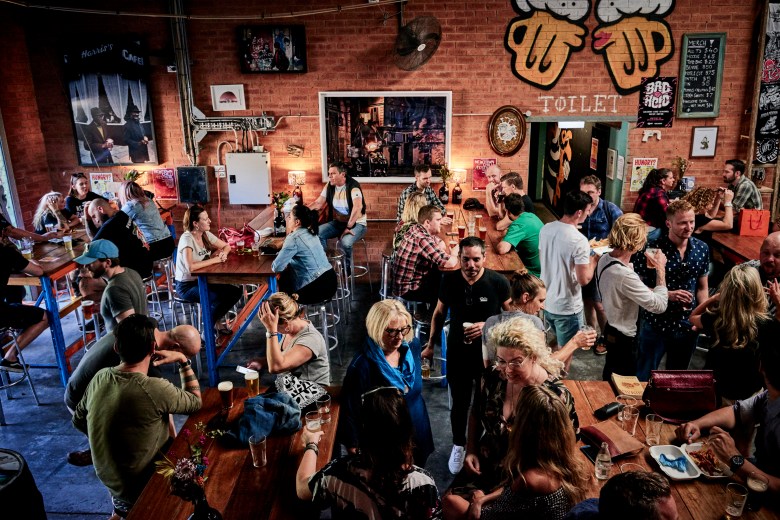 Now encompassing 18 independent breweries across six suburbs, the Inner West Ale Trail has received funding to boost its status as the craft capital of Australia.
Now encompassing 18 independent breweries across six suburbs, the Inner West Ale Trail has received funding to boost its status as the craft capital of Australia.